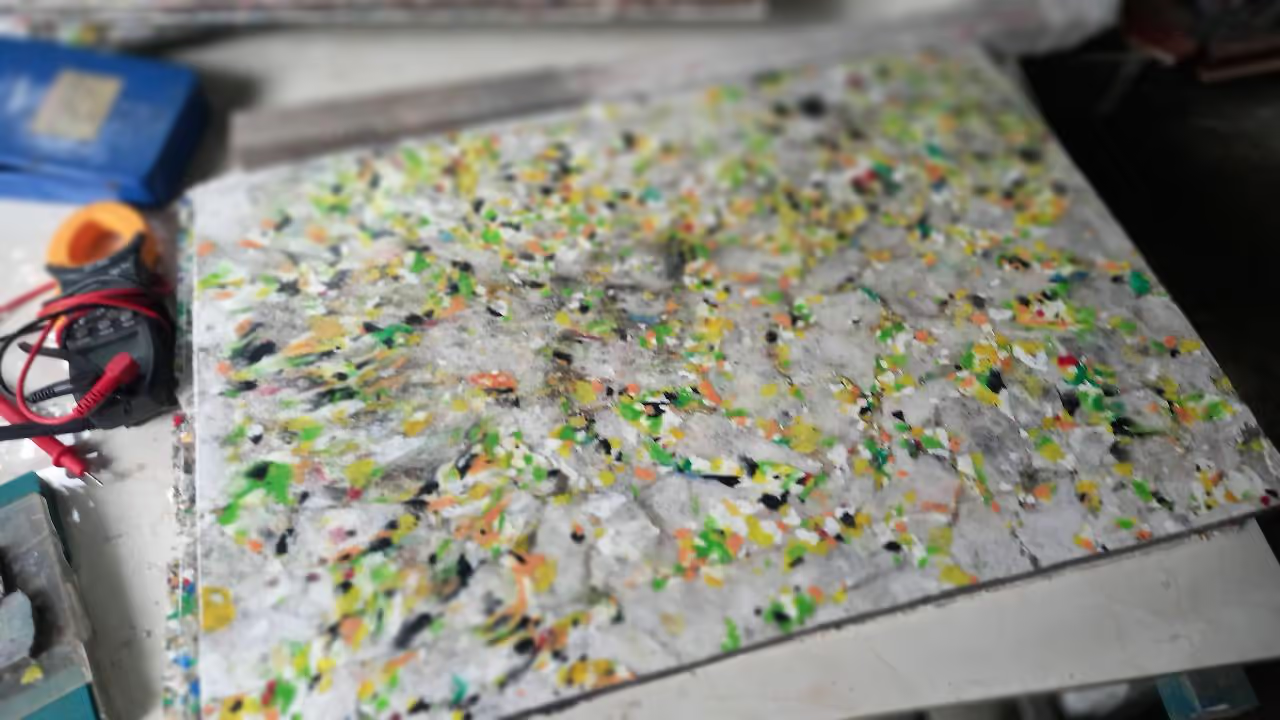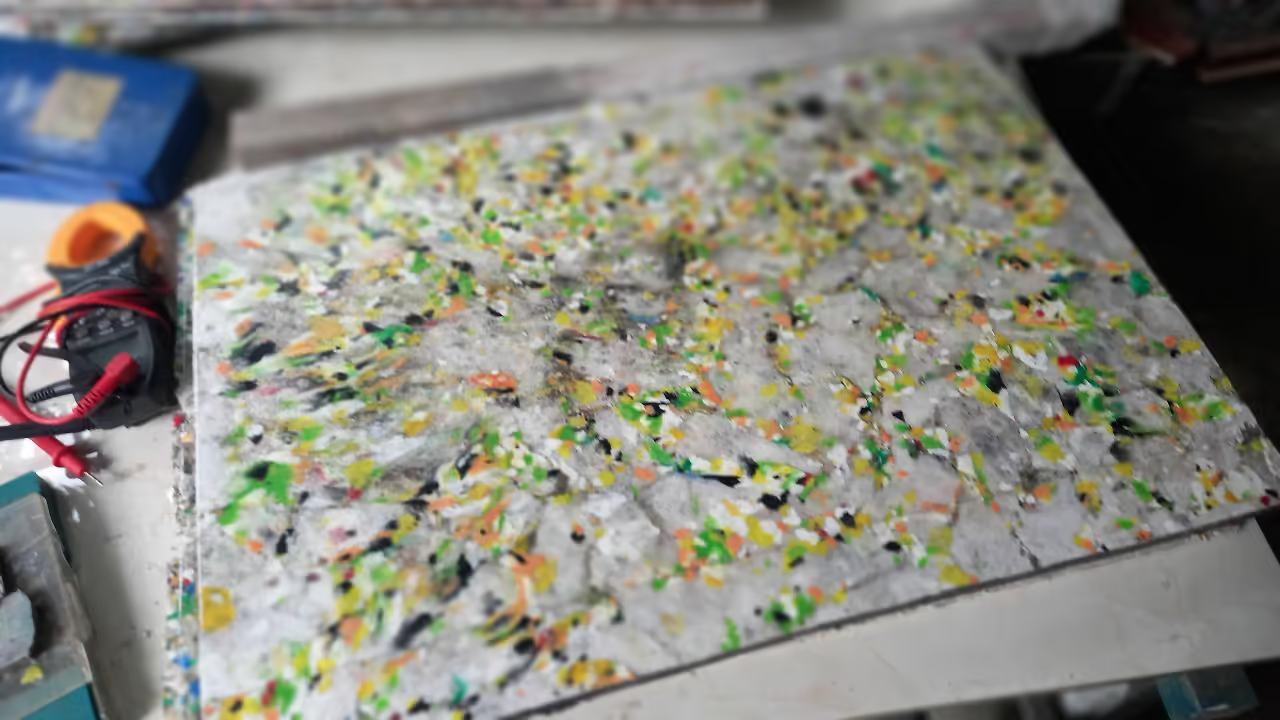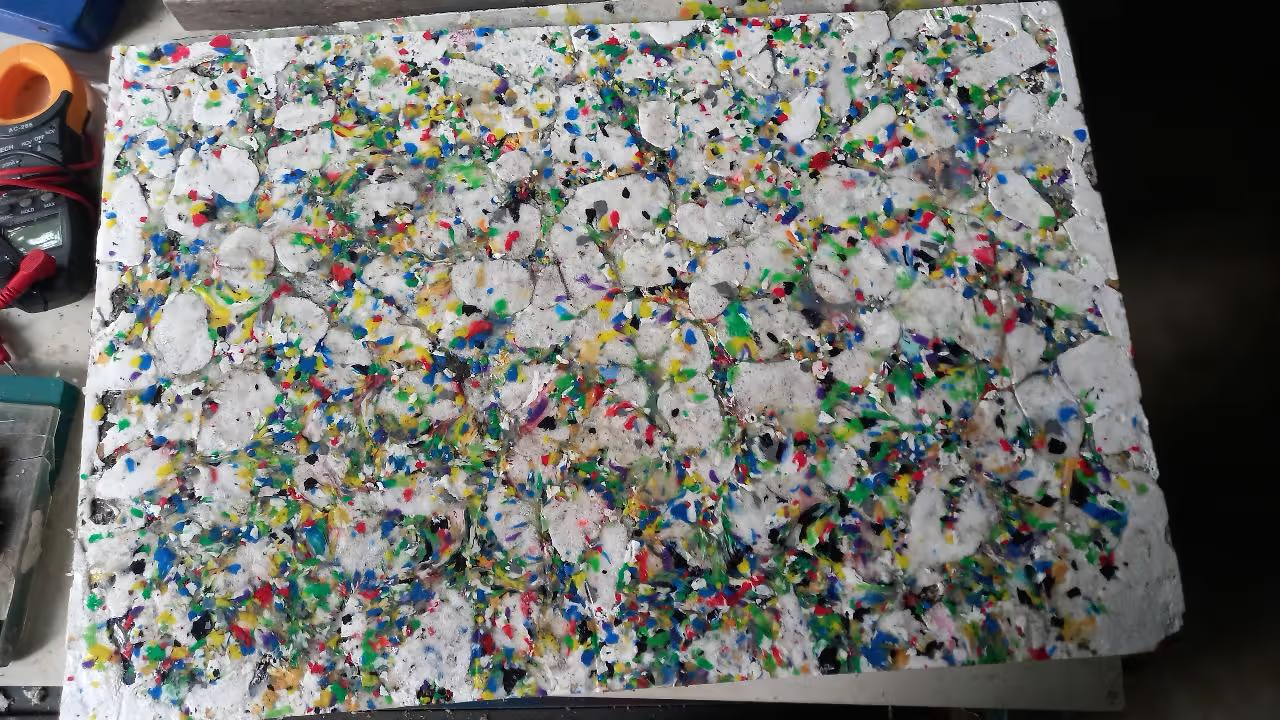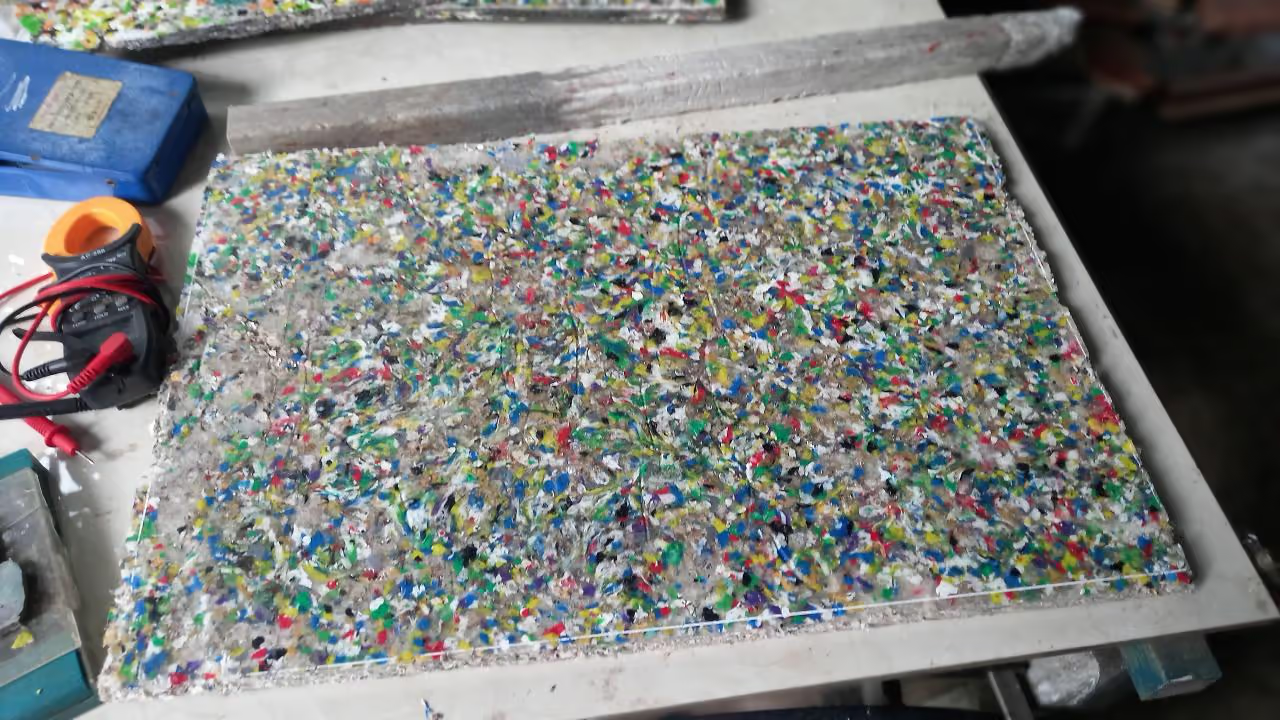PP Sheet Press Guide
PP sheet presses effectively mold pellets or HDPE chips; however, they fall short for various plastics, especially flakes from shredders. Large boards over 1 square meter (10.8 square feet) are unnecessary for most furniture applications. Thus, we developed a method to create boards from mixed plastics. This approach is particularly beneficial for remote areas like islands and mountains, where transporting waste to processing facilities is impractical.
Table of Contents
-
We utilize mixed plastics, excluding PET due to its widespread collection. Our focus is on materials typically neglected by traditional systems, such as aluminum compounds, foams, tape, strings, nets, and various packaging materials. We intentionally exclude polyurethane from items like motorcycle seats. Our process produces durable surfaces, more resilient to degradation than those made with polypropylene or polyethylene.
Our affordable press is portable enough to be transported easily. The resultant boards measure approximately 16.5×22.8×0.4 inches (42×58×1 cm), which is generally sufficient for most furniture projects, adding greater value compared to bricks or tiles.
-
We fill a tray measuring 62×42×20 cm (24.4×16.5×7.9 in) with a layer of EPS rocks and add some colorful HDPE or PP, comprising about 10 percent of the board's weight, approximately 200 grams (7.1 oz). Then, we add 1800 grams (63.5 oz) of mixed plastic waste. The tray is placed in a toaster between two hot aluminum plates. It has two parts for easy opening and cleaning with a steel brush. The thin iron sheets require minimal energy to heat.
-
The tray containing the heated plastic board is placed in a second frame and secured with clamps. A 19.7 in clamp exerts a pressure of 1,102 lbs, sufficient to maintain its shape during cooling. The toaster can then prepare the next board. Heating 4.4 lbs of plastic takes 20 minutes with a 5 kW system, as plastic transfers heat poorly and cannot absorb energy quickly.
-
Making Boards from HDPE Bottle Caps
Creating boards from HDPE bottle caps offers limited environmental benefits. A more comprehensive approach is required to address the diverse plastics found in nature. Our technique enables the production of up to 20 boards, each measuring 23.6 x 15.7 x 0.4 inches (60 x 40 x 1 cm), per day. Some individuals invest in a PP sheet press, unaware that it is incompatible with flakes. Consequently, my video serves as a thought-provoking guide.
Tools
- Steel brush (for cleaning toaster parts)
Hardware
- Portable PP sheet press
- Toaster with aluminum heating plates
- 5 kW heating system
- Clamping frame with 19.7-inch clamps (1,102 lbs pressure)
- Custom trays (62×42×20 cm)
Software
No specific software mentioned in the tutorial.
Articles
- Instructables: HDPE Plastic Press // Made From Scrap
- Instructables: Bottle Cap Table With Poured Resin Surface
- Photrio Forum: Why Can't the Book Printed Material be Replaced with Plastic?
Papers
YouTube
- Build a PRO sheetpress machine and make sheets (part 3.7)
- Make Your Own Plastic Sheet Press
- How To Make A Plastic Sheet With A Sheetpress?! | By Wedoo



